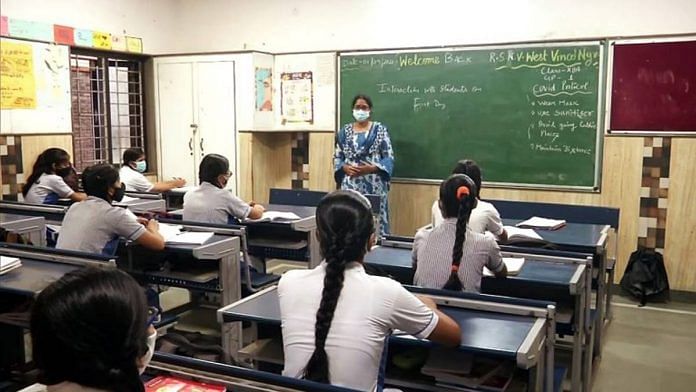
Thank you dear subscribers, we are overwhelmed with your response.
Your Turn is a unique section from ThePrint featuring points of view from its subscribers. If you are a subscriber, have a point of view, please send it to us. If not, do subscribe here: https://theprint.in/subscribe/
Artificial Intelligence (AI) is going to disrupt the workforce of tomorrow. The jury’s out on whether it will lead to the envisioned apocalypse of mass unemployment or utopia of machines working with humans towards a fast growing economy.
What kind of jobs are likely to change? That’s another raging theoretical debate in academia and the world of talent acquisition. There is a broad consensus that caregiving and other involving working with other humans are unlikely to be lost to AI and other forms of automation. A study by The Brookings Institution identifies occupations such as social work, teaching, sales, personal care services and food preparation services as those which will remain resilient despite the onslaught of AI. From a gender lens the survey also found that the jobs held by women will be less likely to be automated since they currently hold the majority of the jobs in these occupations.
If we accept that such a scenario will happen in the future, the question arises: What are we doing to prepare for such a situation?
The workforce for tomorrow will need to develop strong socio-emotional skills along with empathy to thrive in such roles. Preparing for this is a heavy mandate for policymakers and operators running our schools today. High schools especially will need to double down on changing their curricula to build empathetic citizens who can take up these jobs of the future. The way we assess our students should also significantly change keeping with the needs of the future of work.
This transformation is particularly critical in the Asian economies such as India, China and Japan where students even today spend years preparing for competitive examinations in cram schools to enter top technical, medical and law schools in their respective countries. Although these schools have prepared students well for great technical jobs, they prepare students to become fantastic individual contributors in their careers. However, those skills may become less valued since roles in engineering, production among other technical fields where skills developed through the rigors of cram schools followed by technical education have higher exposure to automation and will have lesser value in the long run.
As a result of this shift I foresee education systems across the world to make changes today to create the workforce for tomorrow. First, teachers need to be trained to coach students into collaborating more and understanding people’s different working styles and sensitize children about gender inclusion. This needs to be ingrained in students from elementary schools itself when it is easier to build collaboration among students. Secondly, curriculum designers will need to integrate social and emotional learning (SEL) of students in the curriculum. Experts in education conducting research on learning outcomes of children in India have been rallying for SEL since 2020. Thirdly, assessment specialists will need to design methods to assess SEL outcomes for different age groups. Fourthly, various sports, particularly team sports as a structured program should be offered from middle and high schools similar to the high school basketball and football programs in American schools. With the growth of the IPL and other private leagues in football, volleyball and badminton, the scope to feed high school talent into teams is a potential opportunity for both public and private schools to leverage. Lastly, policymakers will need to fight the tough battle of regulating or in fact ensuring that cram schools are phased out. The coaching mafia gripping the lakhs of engineering and medicine aspirants each year will particularly have to alter their approach of teaching students beyond a singular objective of clearing an examination.
To fulfill the potential of the Asian century and overcome disruptions posed by AI, the Asian giants will have to implement these changes in the next 2-3 years to prepare a workforce for the mid 2030s. We may not know what the future will hold for all the jobs in an AI driven world. However, making these reforms will prepare our students to become emotionally mature and contributing workers in society.
These pieces are being published as they have been received – they have not been edited/fact-checked by ThePrint.


COMMENTS